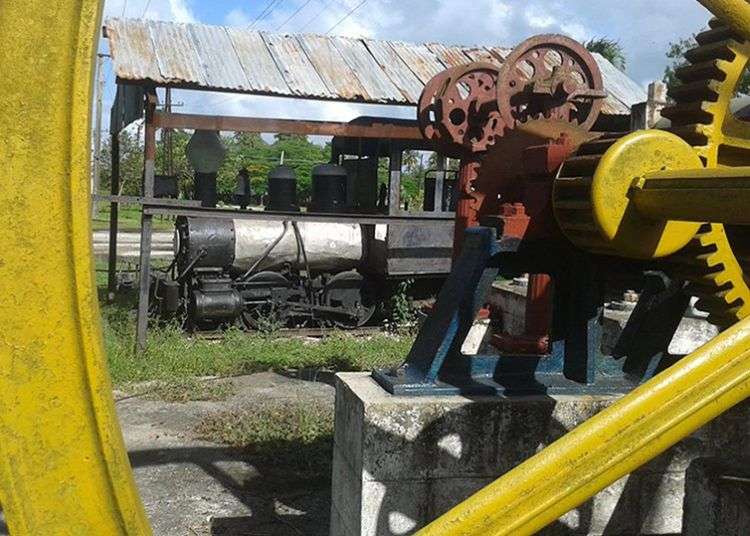It is said that back in 1952 someone known as Mr. Miller, a nice Yankee, didn’t allow Nene Alfonso and Manolo Docampo to buy the former sugar mill La Lucrecia, seven miles south of Lugareño, a town located 60 kilometers northeast of Camaguey province. By that time the metallic remains of about 30 mills in the area were still preserved and the two friends used to make their living by buying and selling iron.
However, Mr. Miller was particularly fond of this one. That’s why; he ordered young Gonzalo the bitter task of “moving it intact” and placing it in front of the sugar refinery of six towers, which that same year would have the biggest sugar cane harvest during capitalism and the second largest in its history.

For some reason it was important for the “American”: during the early 20th century those pieces had travelled by ship from Brooklyn to New York, along with a steam locomotive made in Philadelphia. Miller also demanded the transfer of large cooper pans in which, out of spatula and charcoal, slaves used to get unrefined sugar in blocks. Thus, as Mr. Miller was not ignorant, he created his own museum.
As a result of his exquisite work in its assembling, Gonzalo became the historian of the place and the day Mr. Miller left, after kissing the machines, he told him: “take proper care of all this iron”.
A few days ago I visited Gonzalo and I learned something no one had taught me at school: Mr. Miller was not a bad guy. He had palm trees planted at the town’s entrance. He travelled to Santiago de Cuba with German Alonso to demand a branch from the owners of Hatuey beer. He contributed with the construction of the school. He authorized the building of the club for black people and he made sure to euphemistically name it “Amantes del Progreso” (Lovers of progress). He prayed by the side of catholic priests to rise the church. He had the parish church electrified and allowed them to light up to two bulbs per house. He found the right people for pumping water and imported the necessary materials to create an aqueduct.
The 80-year-old historian believes the world is his home, so he treasures it with passion. He speaks slowly but we can understand him. He understands President Carlos Mendieta moved heaven and earth to assure Atlántica del Golfo the biggest slice of the cake. In a public auction held in 1934 that sugar company purchased the sugar millfor the giveaway price of 4.5 millions, despite the fact that it was worthy about USD 50 million. From then till Fulgencio Batista’s administration, all presidents were somehow shareholders.
Miller’s superiors were aware that a number of unfortunate events, including the hurricane in 1932, would lead the Cuba Cane Sugar Corporation to bankruptcy, so they waited as vultures for the right opportunity.
That was actually a saga of another story: since the beginning of the century Cuba Cane took control of Don Melchor Bernal y Varona’s sugar mill. Therefore,

faced with debts, the only option was to mortgage their mill.
By 1880 Melchor had inherited “El Carmen” and “San Federico” farms. And, as Don Gaspar Betancourt Cisneros was friends with his parents, the new landowner named his mill Lugareño.
Gonzalo explains that Mr. Miller knew every anecdote in detail. He knew all about the Chinese cheap restaurants; how the first Dutch and Mexicans got there; about Siam, the Asian math expert. He knew Don Melchor used to refer to the ceiba tree planted by the rebels of the 1868 independence war as the “treasure tree”. He could tell the whole story on how shoemaker Jose arrived in Cuba from Spain.
Miller was also serene and calculating, handsome and funny. The day the Spanishleather worker decided to hang himself while Don Jose shoe store was on fire, the American brought the gravedigger, who astonished everyone by saying: “it is ready to be served. It is roasted. I will eat it if I may”. And Mr. Miller started running and yelling: “I already knew the people in this town were really strange”.
Today, all that is history and no one can sense the smell of sugar cane. La Lucrecia is among weeds. Old Gonzalo is suffering for the people that went away unwillingly, but never intend to come back. He almost saw this sugar mill born and now he has to see it disappear.












My name Ada Hordo (maiden name) I lived in Lugareno from1958 till 1968, Loved this article . Please write back